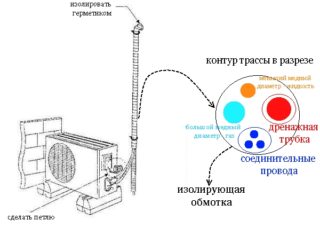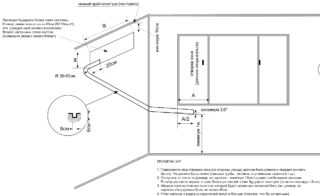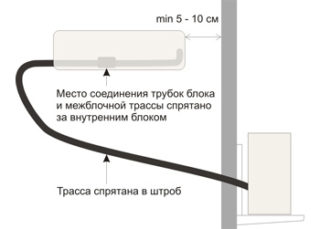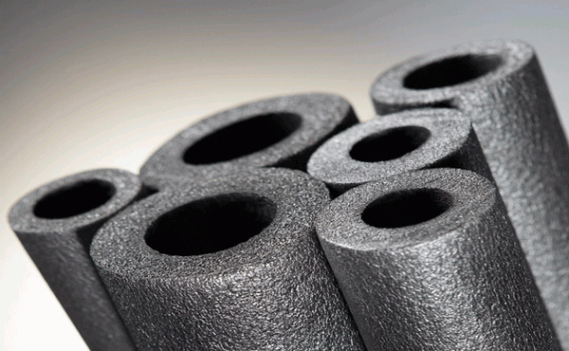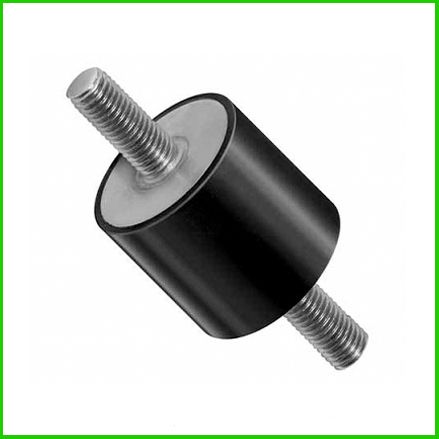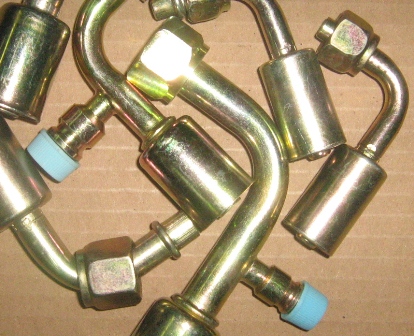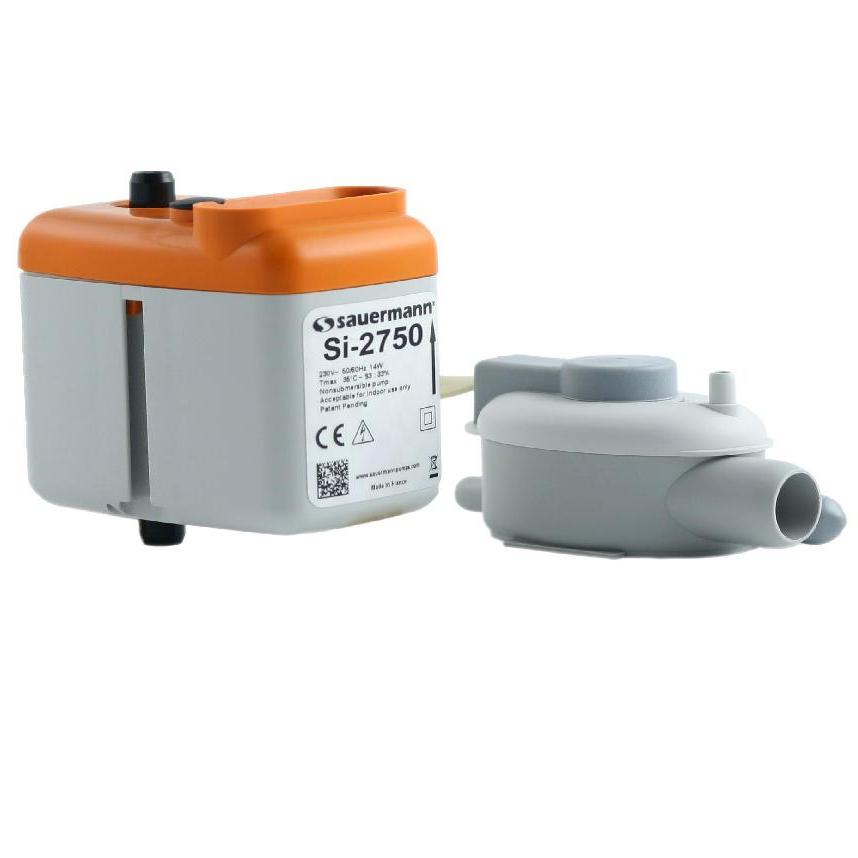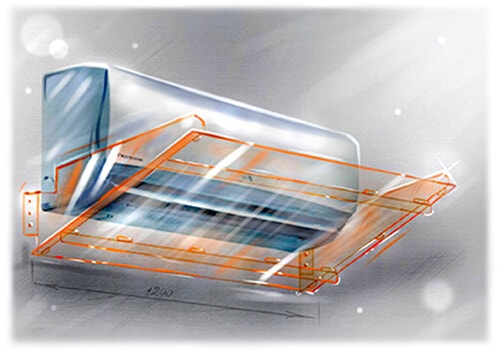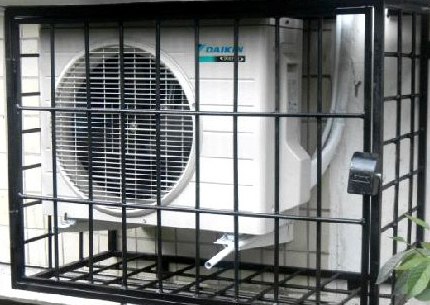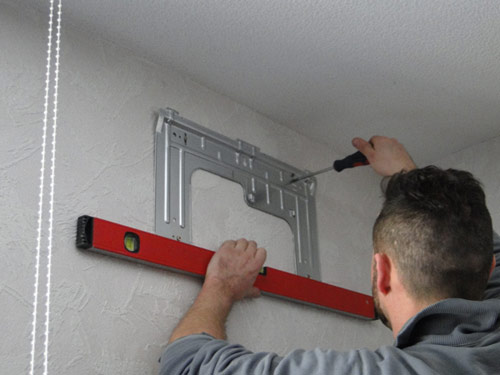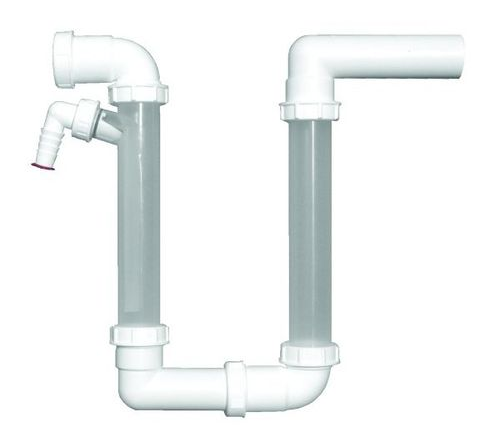It is recommended to install a split system before painters level and paint the walls. In a large apartment or house, several indoor units and one external unit may be needed, which is connected to the fan coil units with pipe and wire routes. These communications are connected in one bundle and sealed at the same time. After a fresh renovation, you will again have to hammer in plaster, brick or concrete to hide the air conditioner route along the ceiling or walls. These are additional costs, dirt in the room and inconvenience. In addition, electrical wires have already been installed in the walls and there is a danger of damage to them if you do not use special equipment that is looking for wiring.
Where to start installation
- mark grooves in the walls at an angle for communications;
- cut holes and lay pipes;
- conduct a drainage tube at an angle to the sewer;
- electricians lead an electric cable in the wall to a separate panel;
- punch a hole to bring the pipes out - to the external block.
This is the most difficult, but practical option - only the decorative plastic panel of the indoor unit will be visible. All pipes enter it from behind, they are not visible and the aesthetic appearance of the room is preserved. The drainage is also hidden, water does not drip on the head of passers-by.
Laying a route for an air conditioner using the chasing method is more expensive - this must be borne in mind if the budget is limited.
Bookmarking a track for an air conditioner - which way to choose
The most difficult part of the installation process is the preparation of the walls and the laying of copper pipes. Here you need to follow the rules so that after a while you do not have to reinstall the system. It is easier to mount a decorative box and hide all pipes under it. This has its advantages: in case of malfunctions, it is easier to check the track that is not embedded in the walls. For independent work, you should consider both options and choose the appropriate one.
Before starting work, you should know:
- it will be impossible to move the air conditioner even by 2 cm, therefore, the installation location must be determined immediately;
- it is recommended to choose the place for the outdoor unit in such a way that there is constant access to it without the services of industrial climbers - for maintenance and self-cleaning;
- if the house is old and the wiring has not changed for a long time, there is a danger of fire, therefore, before installing the air conditioner, electricians must replace all electrical communications in the apartment so that they can withstand the load.
Before starting the installation of the route, you need to calculate the length of the freon line and choose the optimal place for the indoor unit.
Calculations and highway marking
Each air conditioner model has its own limit values for the line length. In household wall split systems, the maximum length of the air conditioner route ranges from 15 to 20 meters. If you exceed the permissible values, you can not count on the declared performance.
- The height distance between the outdoor and indoor units is specified in the installation instructions. This is 7 to 12 meters for conventional air conditioners.
- The drainage system can work by gravity method - at an angle, or have its own pump that pushes condensate into the drain.
- There must be at least 10 cm of free space under the ceiling above the indoor unit for air circulation. If the renovation in the room is in the rough stage, you need to calculate how much space will remain and what type of ceiling will be in the room. Draw a rectangle according to the dimensions of the indoor unit on the wall and agree with the repairmen who will do the finishing.
- It is advisable to install one cooling device in one room. If you put one powerful air conditioner in two rooms, one will always be warmer.
- It is important to foresee the location of furniture during the installation phase of the equipment, because the air flow should not be directed towards people in order to avoid colds.
- In the bedroom, you should not place the device above the bed so that the sounds of operating equipment do not interfere with a restful sleep.
After taking into account all the nuances, you can proceed to the installation of the air conditioner route.
Slitting stage
The marking of the groove for the air conditioner is done in several ways. It depends on the drainage system:
- If all pipes - freon and drain - go side by side, the recess is made at an inclination of 3 degrees so that condensate does not stagnate.
- If the drain is located separately, the slope of the groove is only needed for the drain hose. The freon line is laid without a slope. Can be run along the ceiling or along the walls.
- If it is not possible to drain the drainage fluid by gravity, it is necessary to provide for the installation of a pump with which water will be removed from the system.
When marking the recess, sharp turns should not be made, since it will be impossible to bend the pipes for such a turn. It is necessary to avoid sharp corners, otherwise there will be a hall of the copper tube and freon will not circulate freely.
The recess is made 60 mm wide and 40 mm high. For drain tube 20 mm deep and wide. The work is carried out with a wall chaser. An ordinary grinder and a chisel are not suitable, as they can destroy the wall. In a panel house, this can disrupt the load-bearing performance of the walls.
Original models have eyeliner on the left side. In Chinese air conditioners, sometimes there are pipe inlets on the right.
Pipe rolling and laying in a gutter
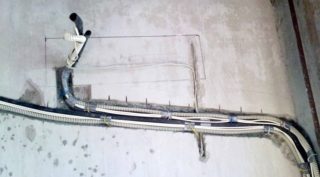
Before installation, the pipes are rolled out in a straight line. At this point, it is important not to step on by accident, because copper is a soft material and wrinkles easily. Heaters are put on both pipes, the diameter of which depends on the power of the equipment.
A corrugation is put on the interconnect cable, and all parts are assembled and rewound with tape. You need to leave a stock of 50 cm pipe near the indoor unit. Near the outdoor unit 1 - 1.5 meters.
Further, the route is laid in a groove and fastened with mounting tape and dowels. It is important that the beam does not protrude beyond the wall - this will create problems when plastering.
Crimping the track
Crimping is necessary for safety reasons. If workers damage the track, the pressurized system emits a loud sound. At this stage, you can restore the track without breaking the equipment. You can also install a pressure gauge to measure pressure.
Air conditioner track cleaning
Moisture should not get into copper pipes, as this violates the chemical characteristics of freon, in which caustic compounds are formed. The liquid can damage the inside of the air conditioner, and it will quickly fail. For cleaning, special equipment is used that removes humid air, after which the ends of the pipes are tightly closed with plugs.
Closing the groove
After completing all the work, you can cover the grooves with a building mixture. If the communications were laid along the ceiling, you can continue to repair and seal the ceiling with plasterboard.After covering it up, it is advisable to photograph the location of the highway with an indication of the distance from the walls, from the floor, so that in case of damage, the wall can be disassembled to a minimum.
When the final repair is completed, it remains to call the masters, or independently install the external and internal equipment, then connect it and check the correctness of work.
In reputable companies, the price of work includes garbage collection after laying the highway. For this, the installers have vacuum cleaners with special dust bags. At the same time, you can conclude a service contract for your system so as not to clean the outdoor unit, risking your life. Construction mountaineering services are very expensive, and a complete cleaning should be carried out at least once a year if the air conditioner is located in a place free from dust and poplar fluff.
Possible problems and creases along the air conditioner route
- They ask to place the indoor unit above the radiator. The air conditioner will run into wear and tear and the compressor will quickly break down, the replacement of which costs half of all equipment.
- Install furniture in the path of air masses. Cold air will return to the air conditioner faster, the sensor will shut off the system, and the room will be hot.
- When installing an outdoor unit on a balcony or loggia, it is stipulated that they will not be glazed for air access. If in the future the balcony is still glazed, the compressor will overheat and you will have to change parts for new ones.
Installers' Problems:
- Kinks and bends of copper pipes in diameter less than 10 cm. They create problems in the circulation and pumping of freon, which increases the load on the compressor.
- Poor fastening of an external device. Threatens to collapse of equipment and injuries - the vibrations of the unit indicate that it is necessary to fasten better.
- Wrong wall for mounting external equipment. Fastening is made only to supporting structures.
To independently carry out such work, you need a specialist consultation or a detailed study of the instructions, the availability of tools and special devices, without which you cannot perform the installation efficiently.

